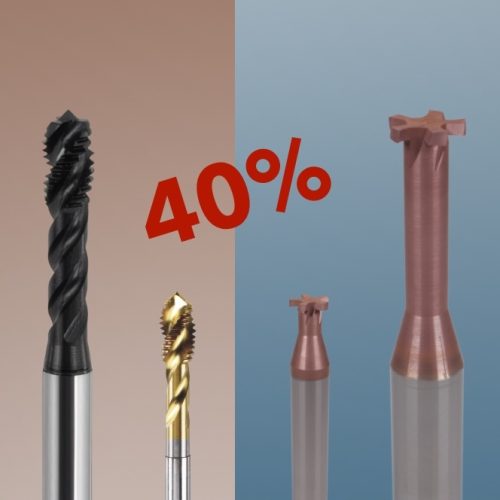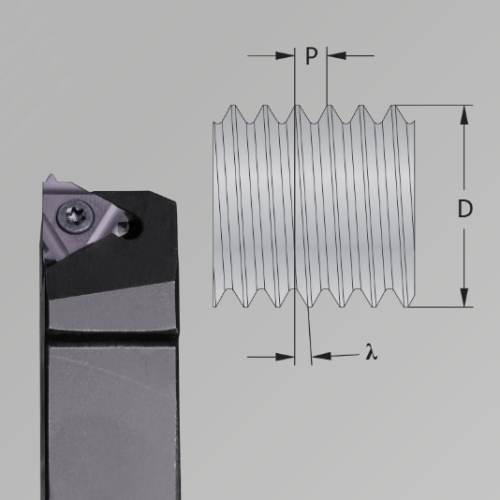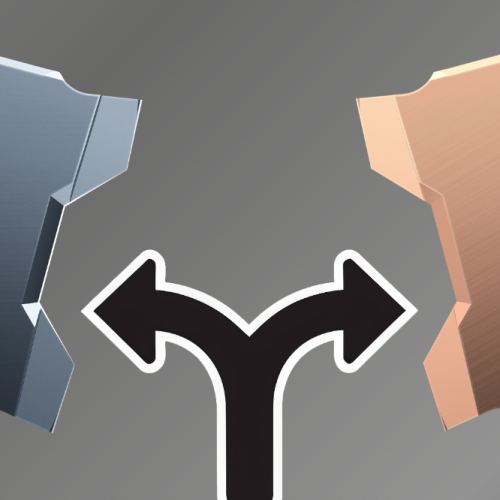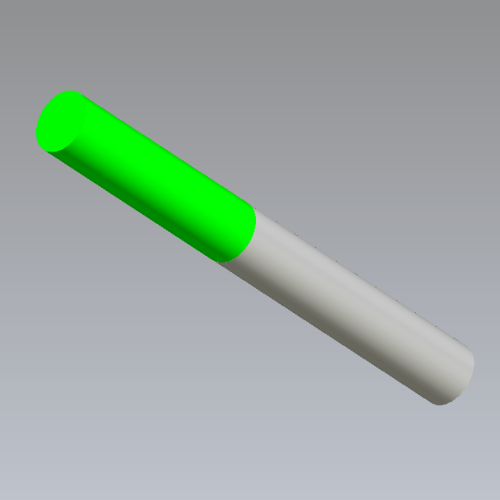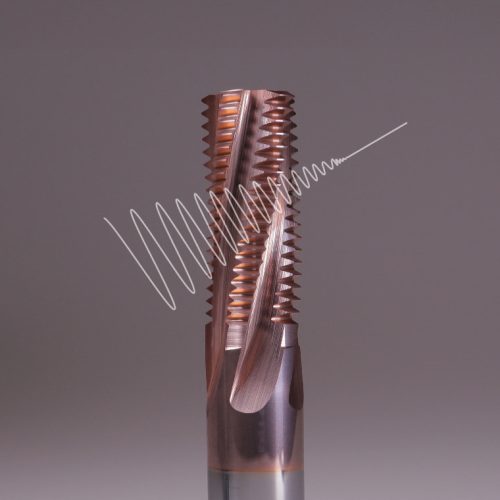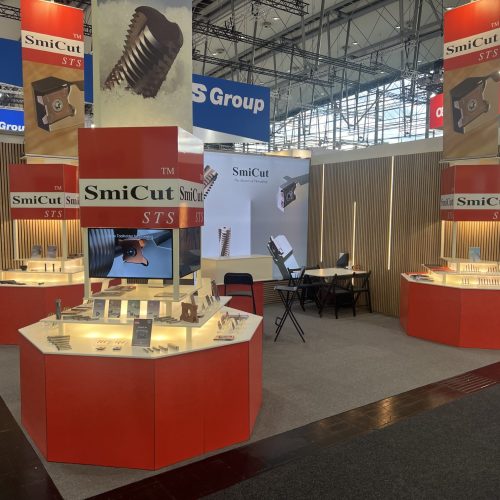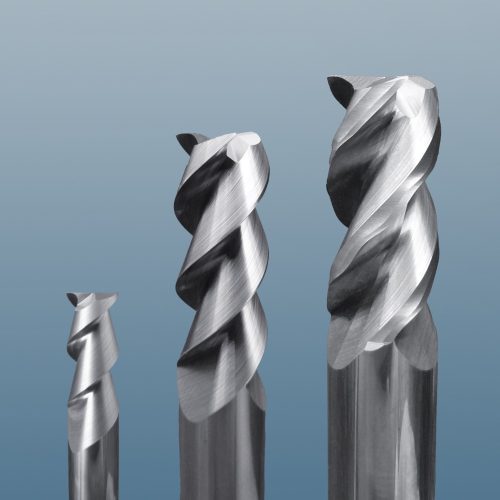Why Is the Helix Angle Important in Thread Turning?
A solid understanding of the helix angle of a thread is crucial for successful thread turning. The helix angle describes how much the sides of the thread incline. A thread is not a straight groove but a spiral winding around a cylinder. If the angle of the threading insert in the holder is not correctly aligned with the thread’s helix angle, you risk excessive tool wear and defective threads.
To achieve optimal cutting properties, the threading insert must be adjusted in the holder to match the thread’s helix angle. This is usually accomplished using anvils (also known as insert shims) that adjust the insert’s angle. Ensuring the correct setup guarantees that the tool operates with maximum efficiency, minimizes the risk of errors, and extends the tool’s lifespan.
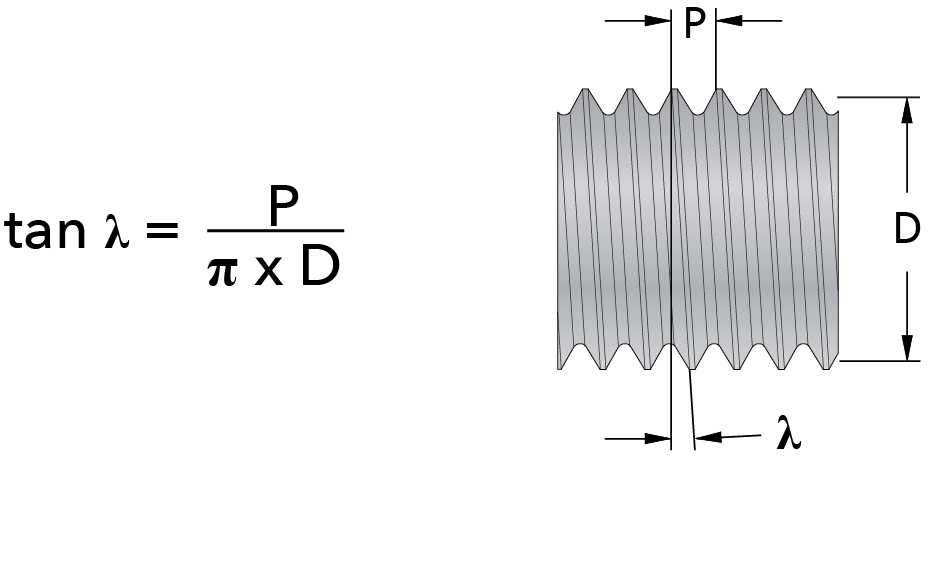
The helix angle of different threads varies and can be calculated using the thread’s pitch (P) and diameter (D).
Which thread diameter is appropriate for calculating the helix angle?
When calculating the helix angle to check whether a thread turning tool can produce a given thread, an approximate value is usually sufficient. For quick checks, you can simply use the major diameter.
However, for a more precise calculation, it’s better to average the major and minor diameters. This gives a value close to the pitch diameter, which is the most reliable reference for calculating the helix angle.
In conclusion:
- Quick estimate – use the major diameter
- Precise calculation – use the pitch diameter
Multi-Start Threads
Multiply the pitch by the number of starts to get the lead, then use that lead to calculate the correct helix angle.
Triangular Inserts: Use the Appropriate Anvil for Optimal Machining
When using triangular inserts, it’s important that the holder’s setup matches the thread’s helix angle. The standard holder for triangular inserts has a preset angle of 1.5°. If you need to adapt the tool for a different helix angle, you can switch to a suitable anvil to match the thread’s helix angle and ensure optimal machining.

For triangular inserts, it’s important that their angle matches the thread’s helix angle. If a lower or higher angle is needed, you can adjust by changing to a suitable anvil.
Calculate the Helix Angle and Choose the Right Anvil
Go to our Helix Angle Calculator with Anvil Selector Tool to calculate the exact helix angle and get recommendations for a suitable anvil based on the type of threading insert you are using.
You can also use a manual method by following the steps below:
- Use the diagram to find the most appropriate angle for the anvil.
- Consult the table to find the part number for the anvil, depending on the type of insert you are using.
Diagram for Anvils
If the value falls within the blue area (1.5° standard), the anvil that comes with the holder is the most suitable. If it falls outside the blue area, we recommend switching to an appropriate anvil.

Table for Anvils
Select the right anvil based on the threading insert you’re using and the angle you need. In the table, you’ll find the part number to use when ordering. Negative angles on anvils are used when producing a right-hand thread with a left-hand tool or a left-hand thread with a right-hand tool.
(if you cannot see the entire table, rotate your phone to landscape mode)
mm
4.5°
3.5°
2.5°
1.5°
0.5°
-0.5°
-1.5°
FourCut: No Anvils—Only One Holder
A major advantage of FourCut inserts is their extra flank clearance. This eliminates the need to precisely match the thread’s helix angle. The standard holder has a preset angle of 2°, allowing almost all threads to be made with the same holder. This offers enormous flexibility and enables the use of the same holder for different helix angles.

FourCut inserts have extra flank clearance, which means that almost all threads can be made with the standard holder.
Diagram for FourCut Thread Turning
The diagram illustrates how FourCut uses the same holder for many different diameters and pitches. This threading tool, which doesn’t require anvils, is a smart and flexible choice because almost all threads can be manufactured with the standard holder.

Resources and Support
In conclusion, we aim to ensure precision and productivity in your thread turning operations. If you need assistance using our tools, selecting appropriate tool holders and inserts, or have other questions, our technical support team is ready to help. Contact us at info@smicut.se.


